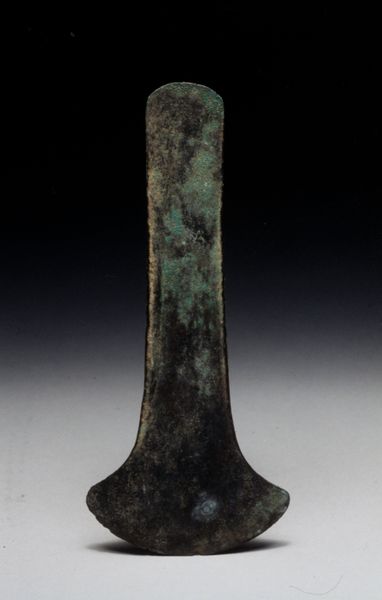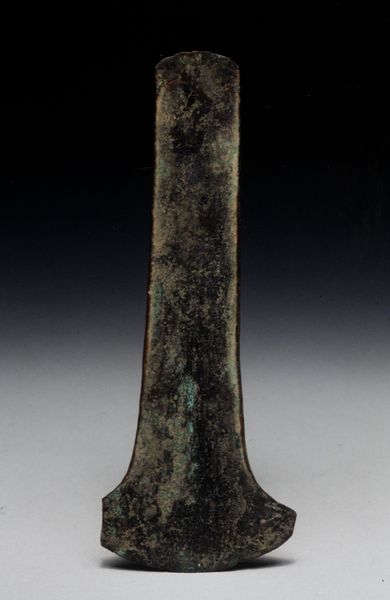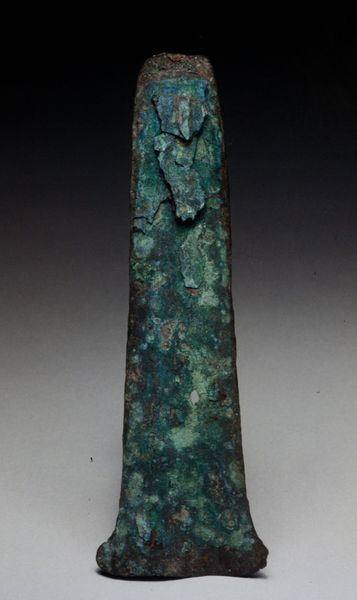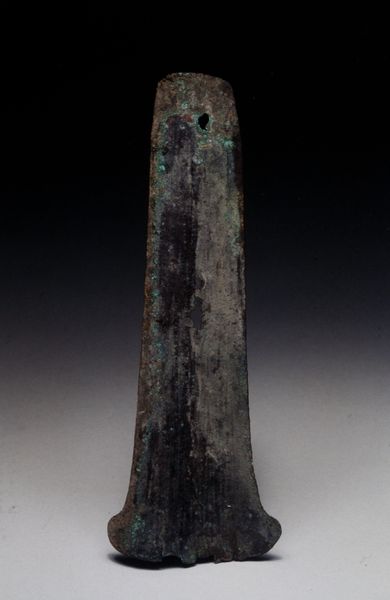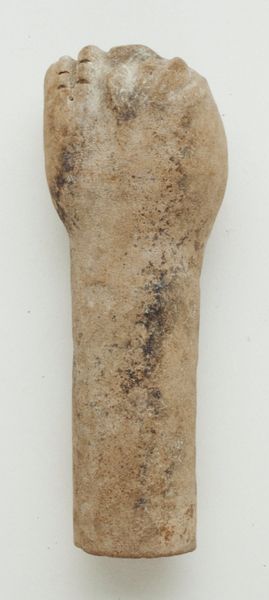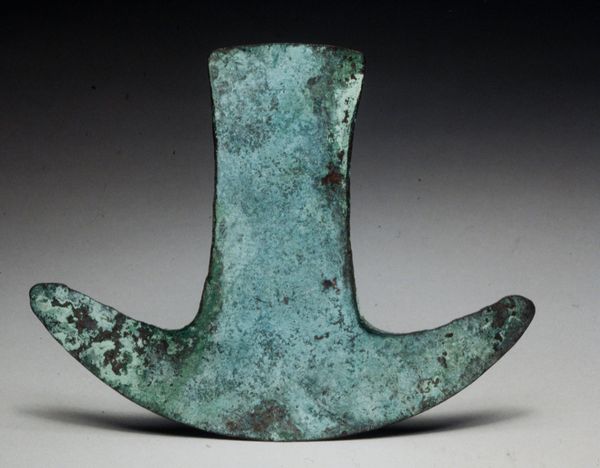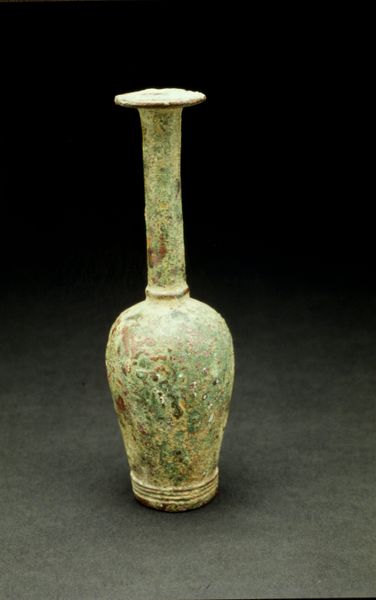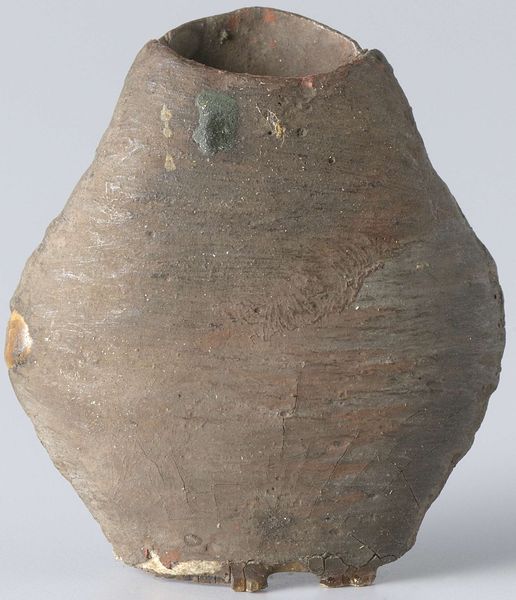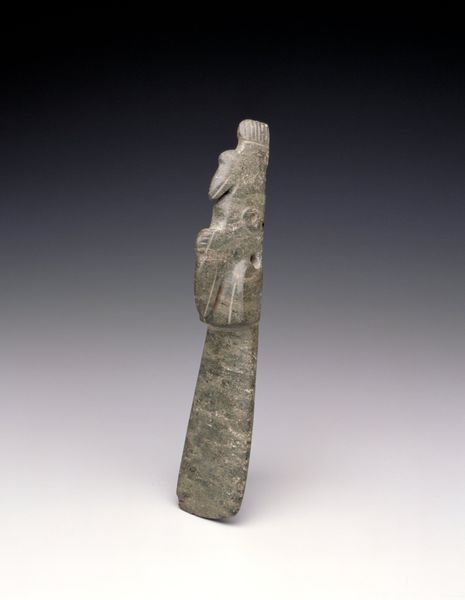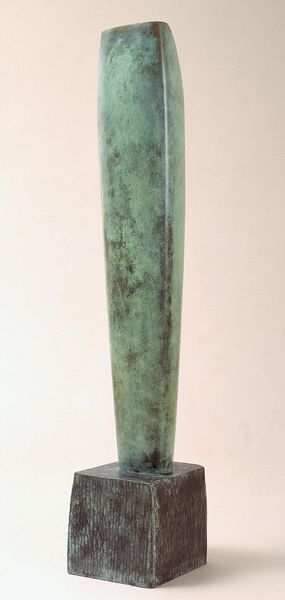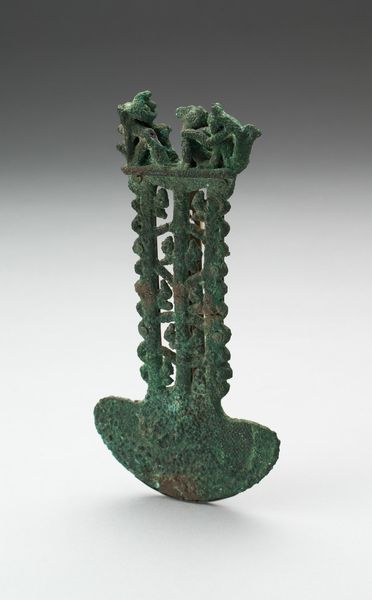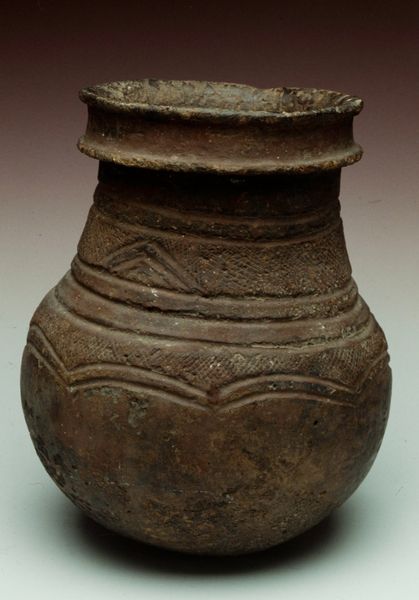
metal, bronze, sculpture
#
african-art
#
metal
#
sculpture
#
bronze
#
sculpture
Dimensions: 7 1/8 x 4 5/16 x 1/4 in. (18.1 x 10.95 x 0.64 cm)
Copyright: Public Domain
This Lambayeque knife at the Minneapolis Institute of Art is a relic imbued with the weight of ancient traditions. The knife's form, particularly its broad, crescent-shaped blade, speaks volumes, echoing similar shapes found in other ritual objects across cultures. Consider, for instance, the sickle, an emblem often associated with the cycles of harvest and rebirth. Such implements are far more than mere tools; they are instruments of transformation, resonating with deep-seated human concerns about life, death, and renewal. The knife, as an archetype, embodies not only the power to cut and sever but also the potential for change and regeneration. Its presence evokes a primal, almost subconscious understanding of the delicate balance between destruction and creation. Like the ouroboros, a snake eating its own tail, the symbolism here is about the cyclical nature of existence—a potent reminder that endings invariably give rise to new beginnings. This isn't just an artifact; it's a repository of shared human experiences, continuously reshaped by the currents of time and culture.
Comments
minneapolisinstituteofart almost 2 years ago
⋮
A tumi is a knife with a flared, semicircular blade that was used in ceremonies throughout the ancient Andes. Lambayeque artists working in northwest Peru made especially dramatic and opulent examples for elite members of society. Lambayeque metalworkers were technologically advanced; they developed a unique type of bronze by alloying copper and arsenic, from which this blade was cast. Originally, this tumi was likely capped by an elaborate finial depicting an important Lambayeque deity, known as the Sicán Lord, executed in materials such as gold, silver, and turquoise
Join the conversation
Join millions of artists and users on Artera today and experience the ultimate creative platform.
